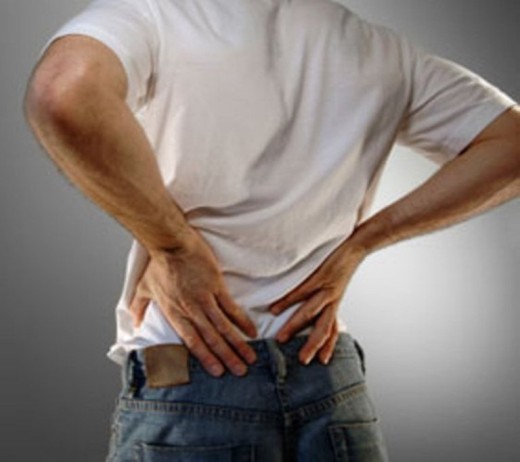
Back Pain
1. Figure out where the core area of the injury is. This can be difficult when you have pain throbbing up and down your spine, as it may seem to come from every part of the back. However, with an injury there should be one main focal area. Press gently along your spine with your fingers, starting with the lower back and moving upwards. You may need someone to help you do this; some areas of the spine are difficult to get to.
2. Assess how bad the injury is. There are mainly two types of back pain: acute or chronic. Acute is a type of injury or illness that is there for a few days and then goes away, best described as coming and going. Symptoms are often reasonably intense and heal in around 4-6 weeks. Chronic pain is more of a persistent pain that lasts between 3-6 months.
3. Obviously, if you are in so much pain that you cannot walk, or are finding it hard to feel your legs, get somebody to take you to hospital. Do not try to take yourself there; if your back worsens and you find you cannot move you may end up stuck somewhere on the way, and possibly may end up in danger. 3 out of 4, or 75% of back injuries occur in the lower back, possibly the most dangerous place to damage the spine as this is where the legs are most likely to be affected. Take special precautions if this is where you have injured yourself. You may also want to seek immediate medical attention if you develop or have developed the following symptoms:
– A feeling of numbness in the pelvis or lower back, and the area surrounding it.
– Shooting pains down one or both legs.
– Feeling weak or unsteady when you try to stand, or your legs suddenly giving way beneath you either when you are standing normally or bending.
– Problems with controlling bowel or bladder movement.
4. See a doctor or osteopath. An osteopath is someone who deals with the bones in the body and tries to resolve any underlying problems or injuries that may have occurred. They can often be quite expensive though, so it may be best to see a doctor first and see if you can be referred to a physiotherapist, who may be considerably cheaper.
5. It’s a good idea to spend the first few days in bed until the pain becomes more comfortable – and especially before you can see your osteopath, doctor or physiotherapist. Watch some DVDs or some TV, read a few good books, and keep yourself entertained. Do not spend too long in bed though, because this can make your back stiff, which can slow the healing process.
6. If you are in a good deal of pain whilst you are healing, you could try applying ice or heat. Ice will help control inflammation, and is especially effective straight after the incident. Heat should not be used until around 3 days after the injury has been sustained, as it can contribute to inflammation during this time. After those three days however it is effective in relaxing painful muscle spasms and relieving tension in the ligaments and muscles.
7. Ask your doctor/physiotherapist/osteopath whether you will be able to do physical exercise whilst your injury is healing. If he/she says no, then take it easy for a while. Do not too anything too strenuous until you are allowed to do exercise again.
8. If you are allowed to do sport, take up yoga or pilates. These are known to help stretch the back, and the gentle exercise can speed up and increase the effectiveness of recovery. Make sure that you do not try to do anything too advanced until your back is stronger and you are more experienced however. Also, it’s a good idea to take a break from any intense or more risky sports such as horse riding. If you wrench your back you could set the healing process back weeks, and may even cause permanent damage to your back.
9. Do gentle back stretches every morning and night. These will help to eradicate any stiffness that may slow the recovery process.
10. Alternative medication and treatment such as acupuncture have also been known to be very effective for relieving back pain. It’s good to go for at least a trial session with an acupuncturist, just to see whether it helps or not. Some alternative medicines may also help the healing process.
For similar articles, read Physiotherapy.